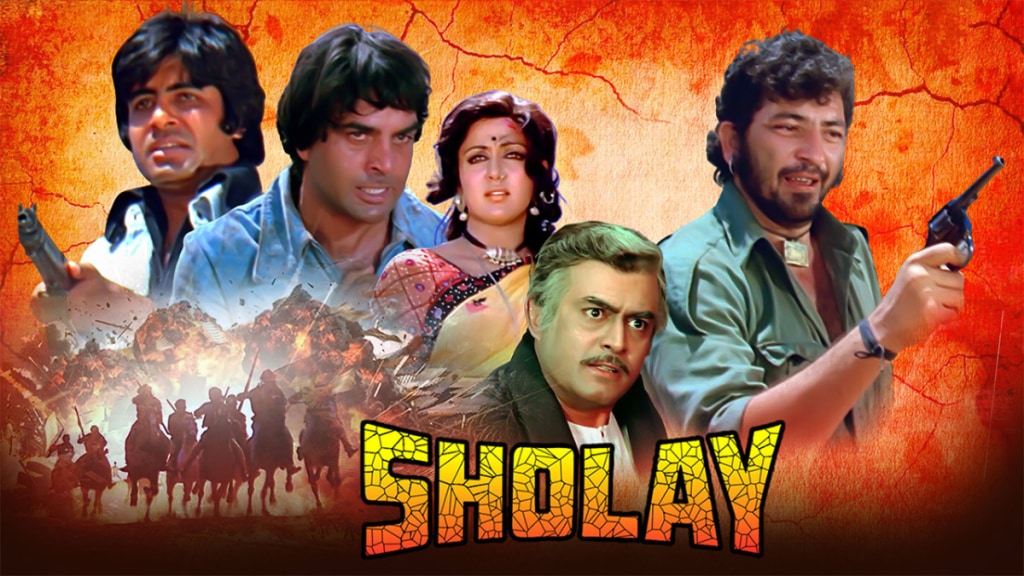As classic films from 1975 celebrate their golden jubilee, they serve as important examples for companies that wish to go beyond nostalgia to revive a product. These movies have stood the test of time to such an extent that they are still being quoted, parodied and referred to across generations.
At a time when brands like Kelvinator, Campa Cola, and Bajaj’s Chetak are making a comeback, alongside the resurgence of mascots like Onida’s devil and taglines such as Pepsi’s iconic “Yeh Dil Maange More”, these films offer valuable lessons in how to tap into the cultural zeitgeist and build lasting relevance.
Experience, not just a movie
Take Sholay. It wasn’t just a movie, it was an experience. At its heart, it is a story of friendship — between Jai and Veeru – that outshines even the film’s romantic storyline. While brands attempt to build universes in 2025, Sholay did it 50 years ago with its beloved characters and iconic dialogues. It showed that when you elevate emotional undercurrents such as loyalty and sacrifice, your audience not only watches, but they also internalise. For brands, this offers a masterclass in creating campaigns that go beyond just the product and cause cultural imprinting. The film’s soundtrack (with songs such as Yeh Dosti and Mehbooba Mehbooba) offered moods, something brands today strive to do with reels and playlists.
“The movie was a masterclass in the power of storytelling and held audiences spellbound,” says Nisha Sampath, managing partner, Bright Angles Consulting. The key takeaway for brands? They must craft layered, emotion-led narratives. Let the message live across dialogue, music, and visual cues in campaigns for lasting cultural relevance.
Now, take the example of Deewar. It tapped into the moral and emotional dilemmas of a generation through its duty versus rebellion, family versus self narrative. The movie wasn’t afraid of conflict, and while Bachchan’s “Angry Young Man” wasn’t aspirational in the traditional sense, he reflected something raw and real. “Deewar demonstrates how anchoring a story in timeless cultural codes can strike deep emotional resonance with the audience,” says Sampath. Shashi Kapoor’s famous line, “Mere paas maa hai”, shows how a simple phrase, rooted in emotion, can become part of cultural consciousness. For brands, it’s a signal to lean into the tension. Some of the strongest campaigns today are those that explore grey areas, such as ones around identity, ambition, responsibility, and let the audience find their side.
Angry young man plot
Then comes Julie, a film that dared to tackle pre-marital sex, single motherhood, and religious identity much ahead of its time. “It reflected a changing India, which was gradually evolving from deep-rooted conservatism to a more liberal, tolerant mindset,” says Samit Sinha, founder & managing partner, Alchemist Brand Consulting. For brands navigating purpose-driven marketing, Julie is a reminder that bold themes only work when delivered with empathy and honesty. Add to that the English-language track “My Heart Is Beating”, which was a cultural outlier at the time, and you have a case for early inclusivity in tone and audience.
Meanwhile in Aandhi, legendary filmmaker Gulzar offered a protagonist who was both political and personal, depicting a powerful, independent, and emotionally complex woman. Suchitra Sen’s Aarti Devi wasn’t a caricature of a strong woman; she was simply a full one. She smoked on screen, wielded political power, and loved on her own terms. “It portrayed a strong, independent woman… someone unapologetically her own person, not just an accessory to a man,” says Sinha. For brands that speak of women’s empowerment today, Aandhi is a benchmark not just in representation, but also in how layered, non-tokenised stories create trust. It proves that controversy isn’t always a threat. The film was banned and later re-released, but its reputation only grew stronger, which is a lesson in brand resilience when one’s purpose is authentic.
Another golden example is that of Chupke Chupke, which is proof that clean humour and intelligent writing have lasting appeal. Its satire on language, class, and perception is as relevant in 2025 as it was in 1975. “Even today, it proves that clean, clever humour has lasting appeal and doesn’t rely on crassness or gimmicks,” says Yasin Hamidani, director, Media Care Brand Solutions. For brands obsessed with viral gimmicks, Chupke Chupke is a case for restraint and craft. It didn’t scream to be funny; it was funny, because it trusted the intelligence of its audience.
Each of these films continues to be rediscovered by newer generations on OTT platforms, in memes, in remix songs, viral reels and ad jingles. That’s what most nostalgia-driven campaigns aspire to: timelessness, not trendiness. As brands increasingly look back to go forward by reviving old taglines, packaging, characters, or jingles, these cinematic milestones show that nostalgia works best when it’s not just familiar, but meaningful.

